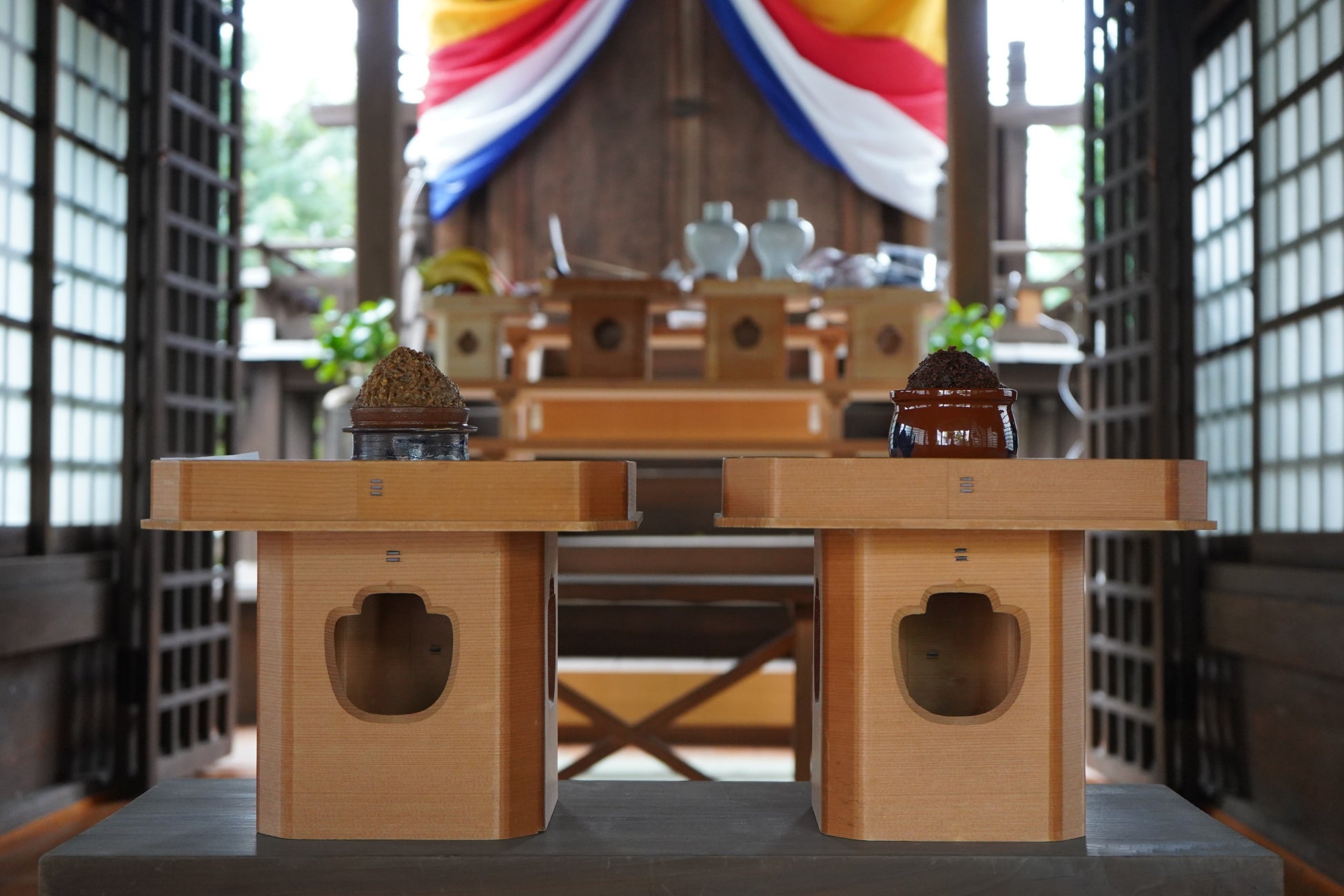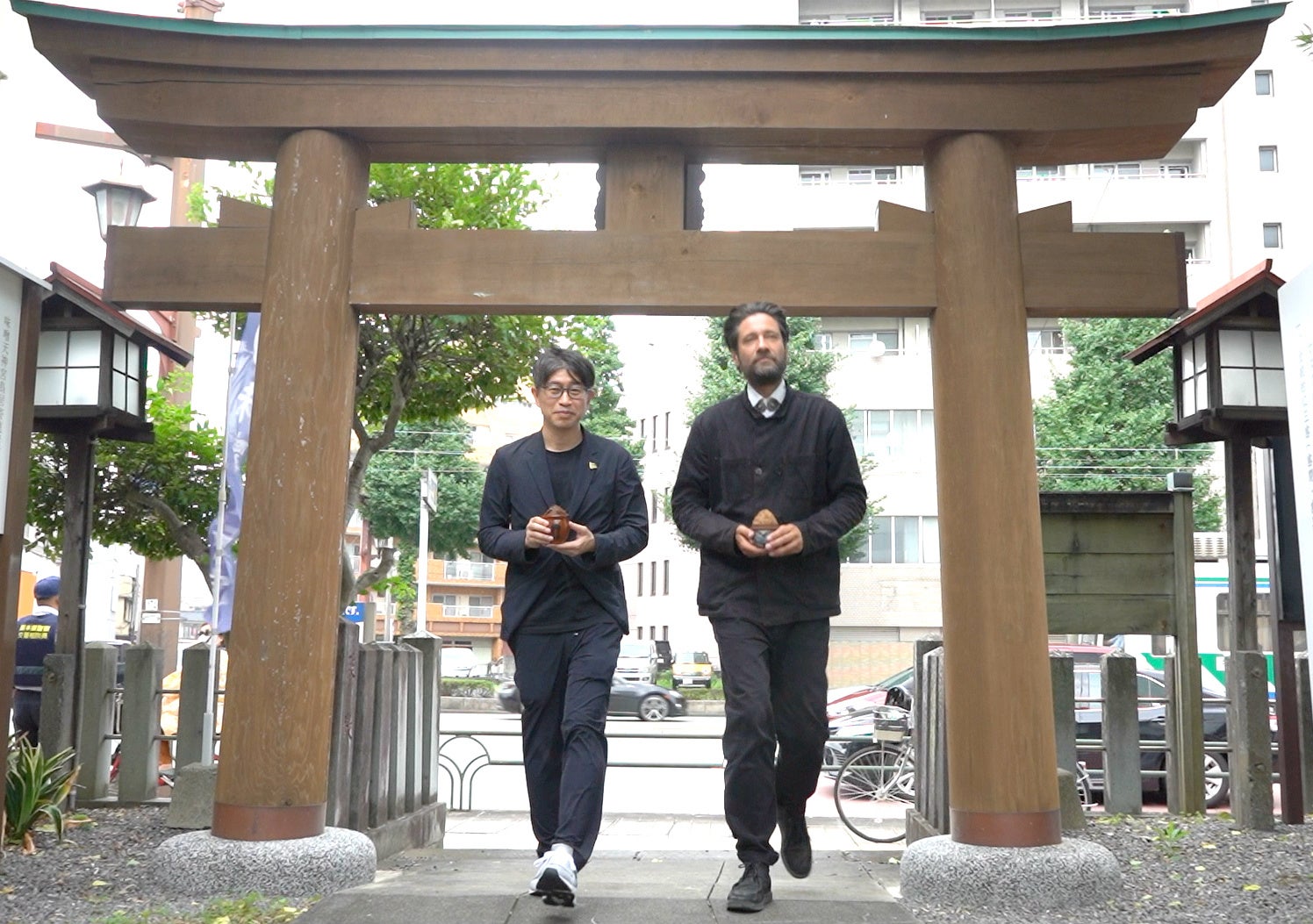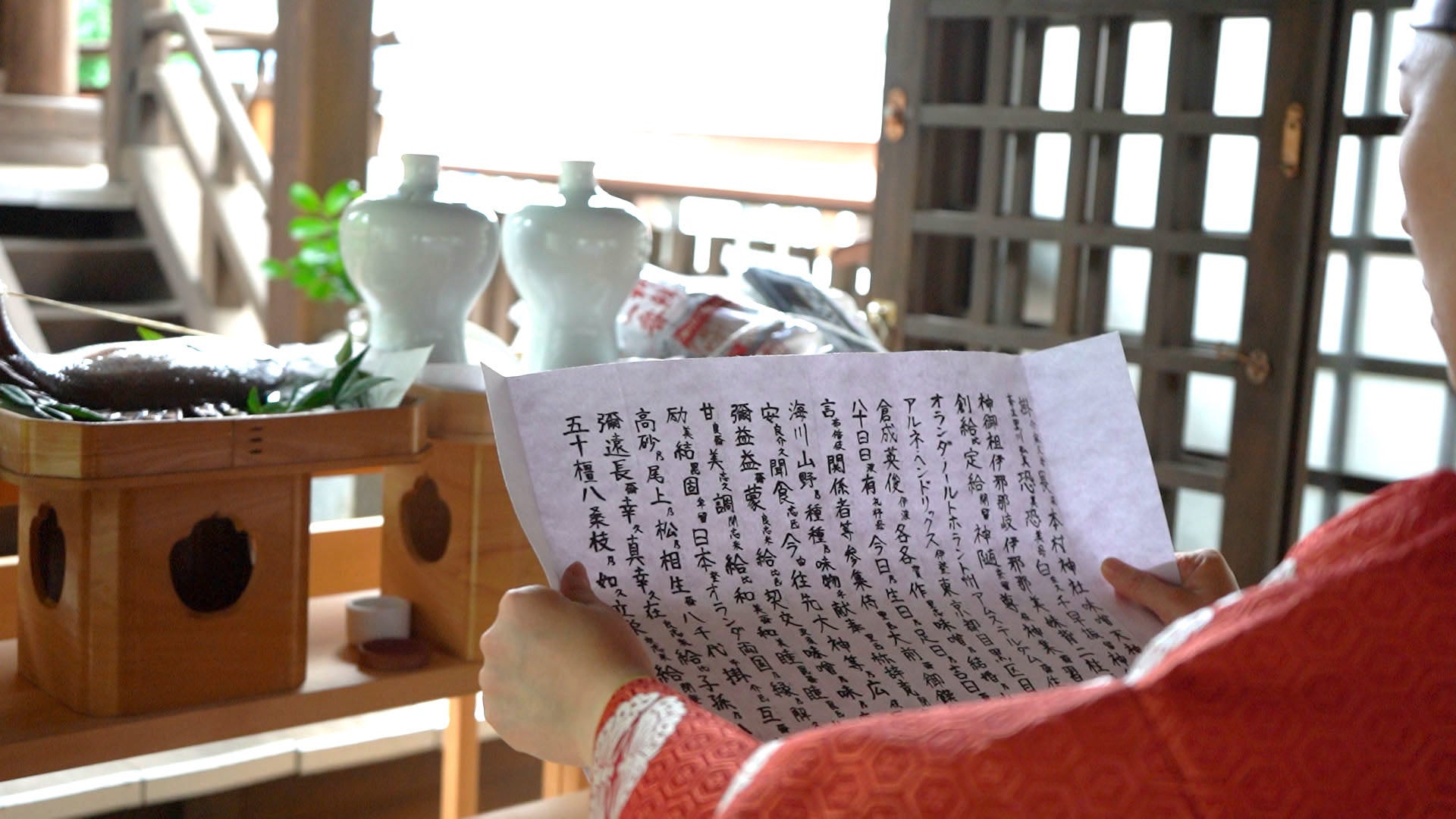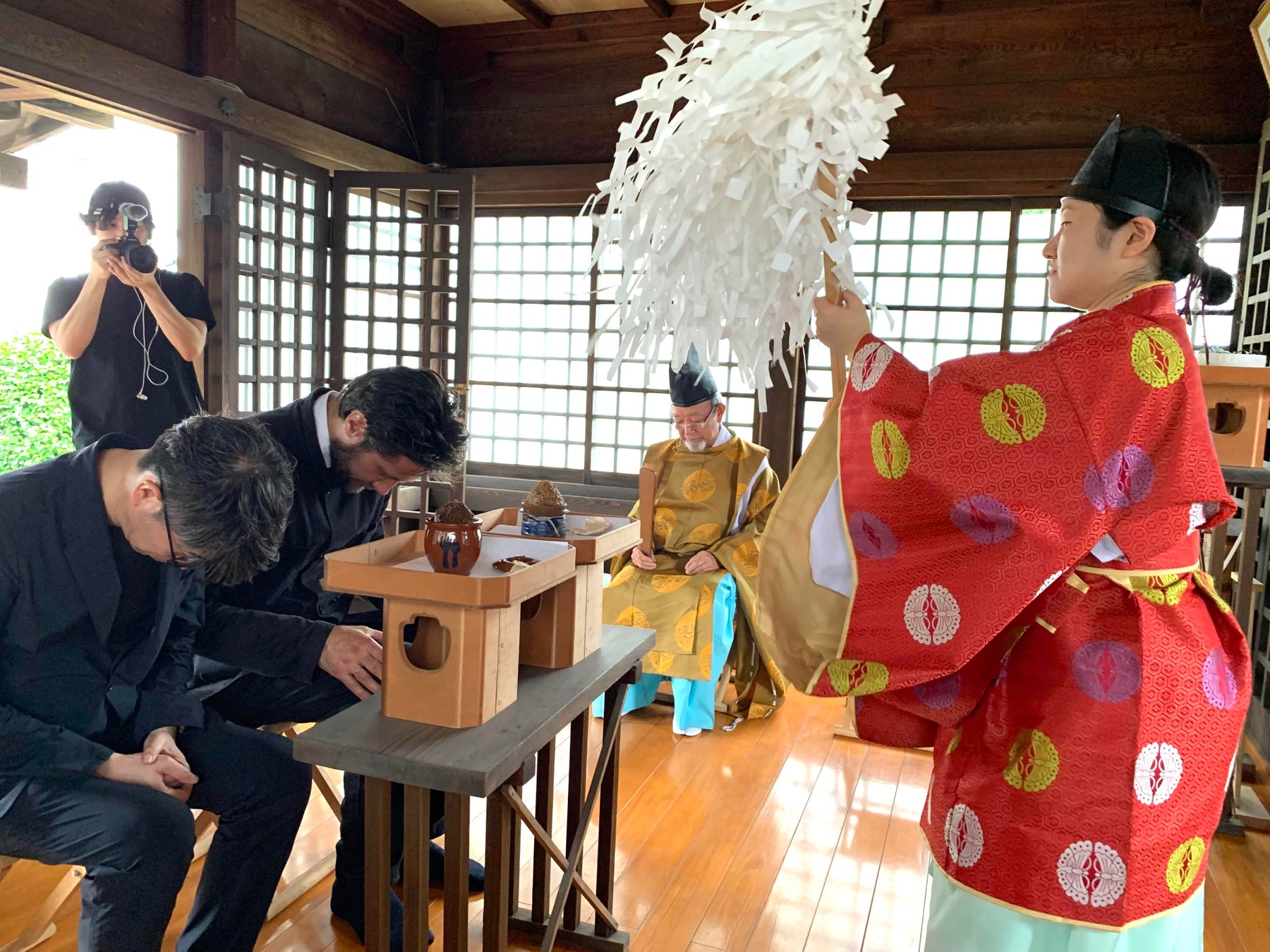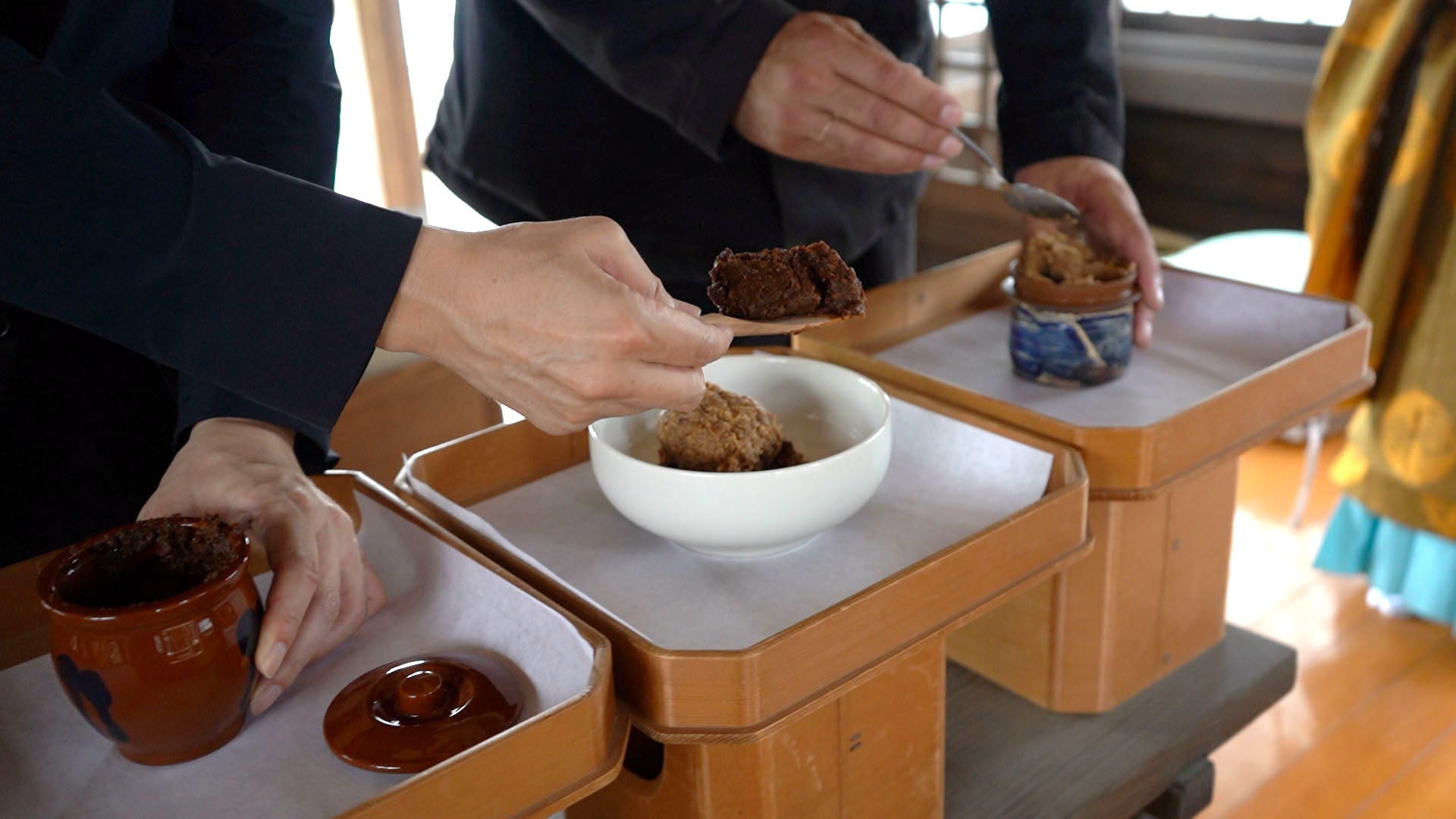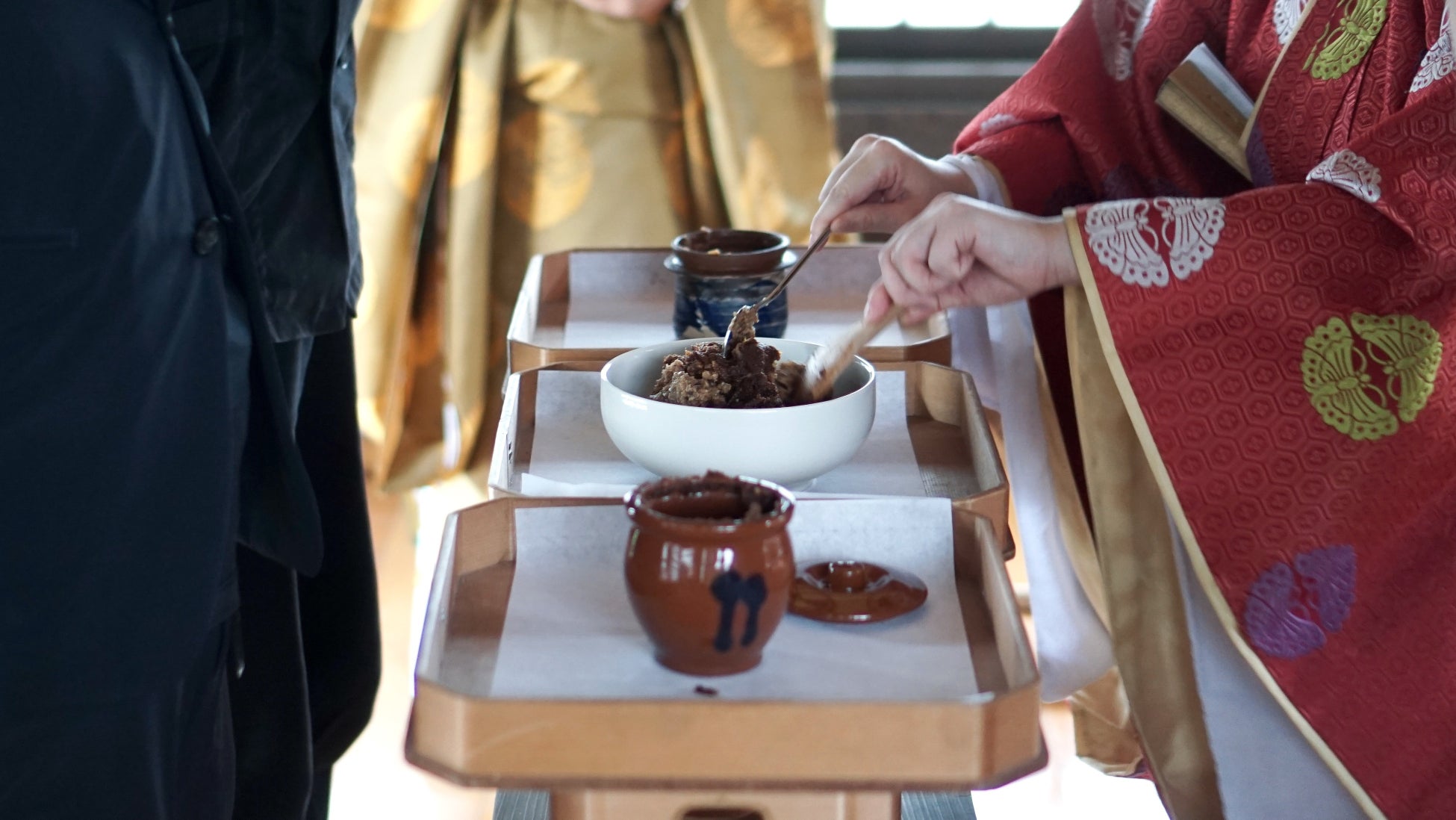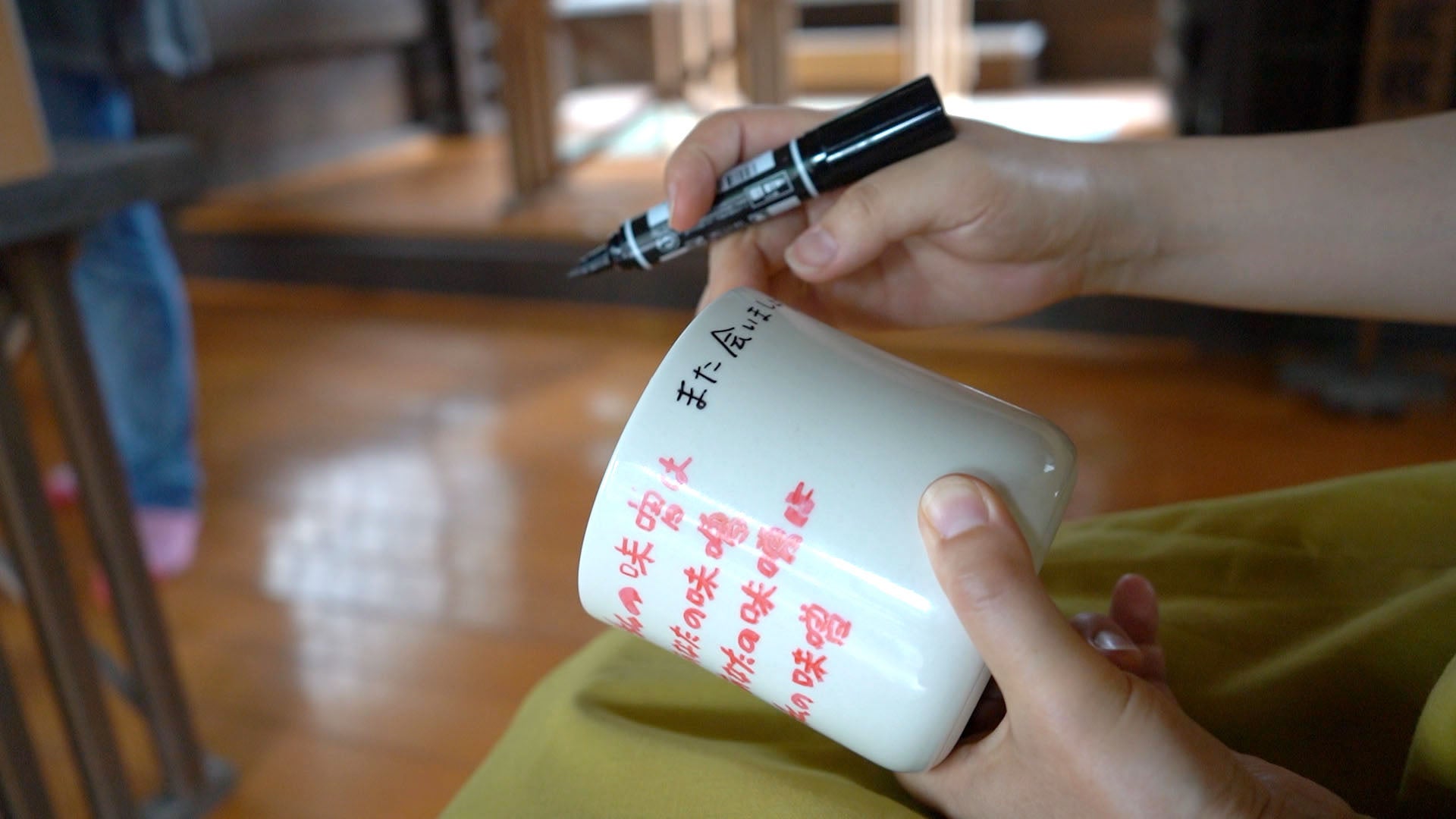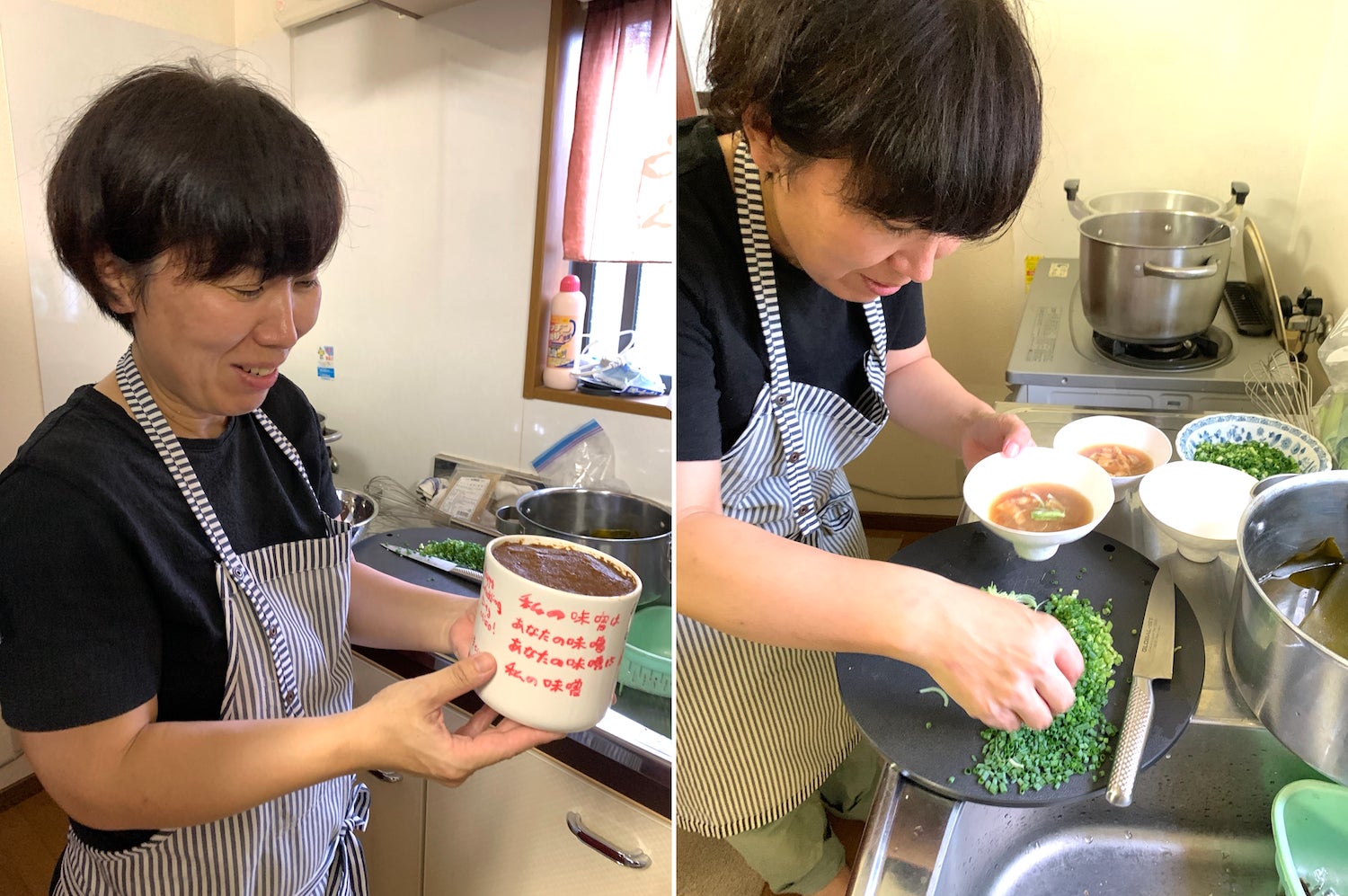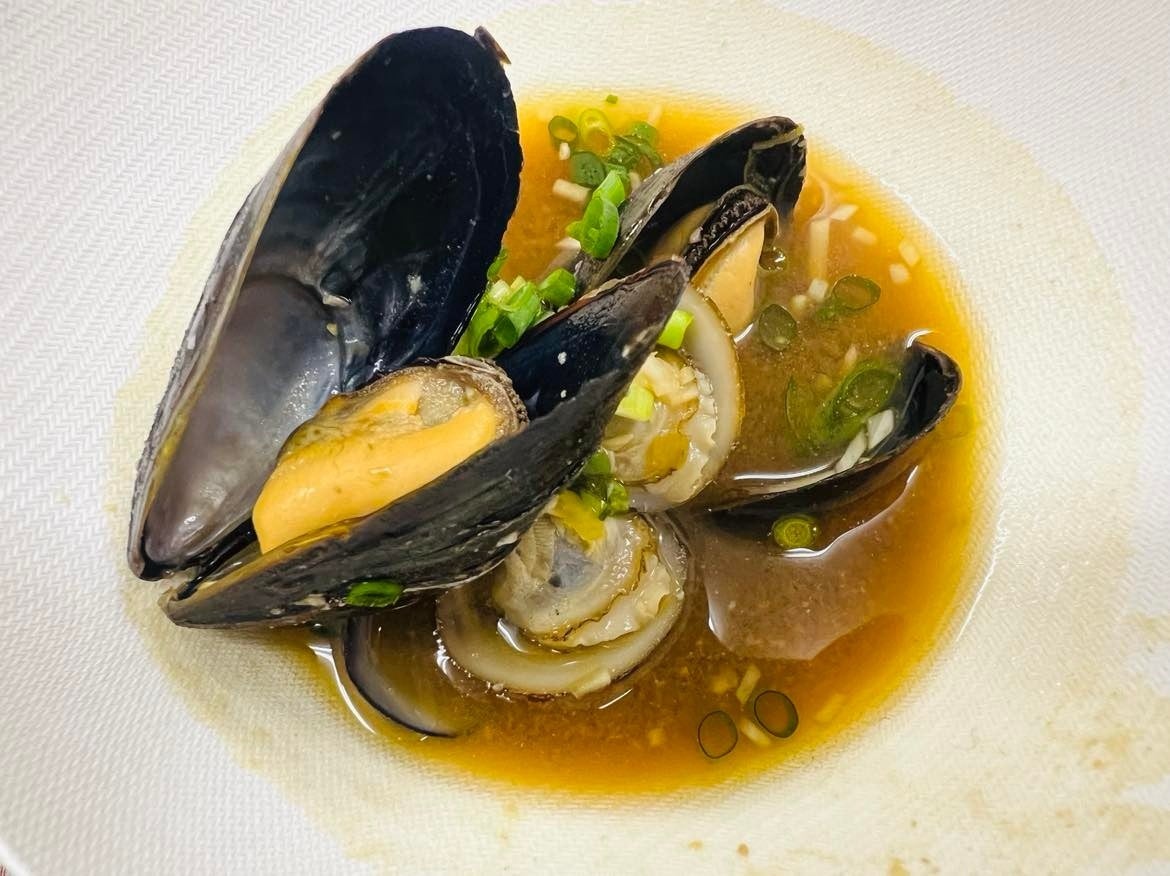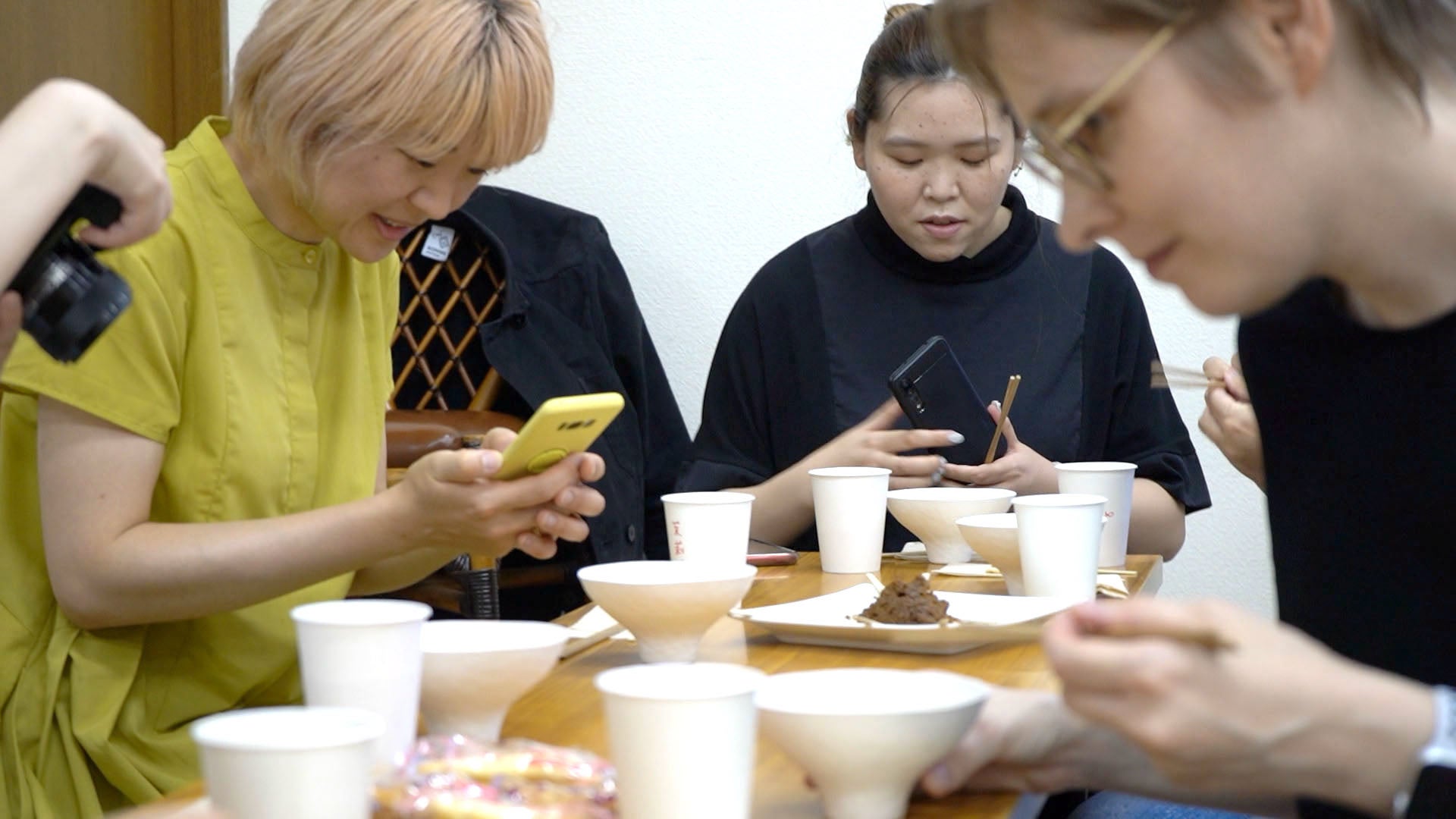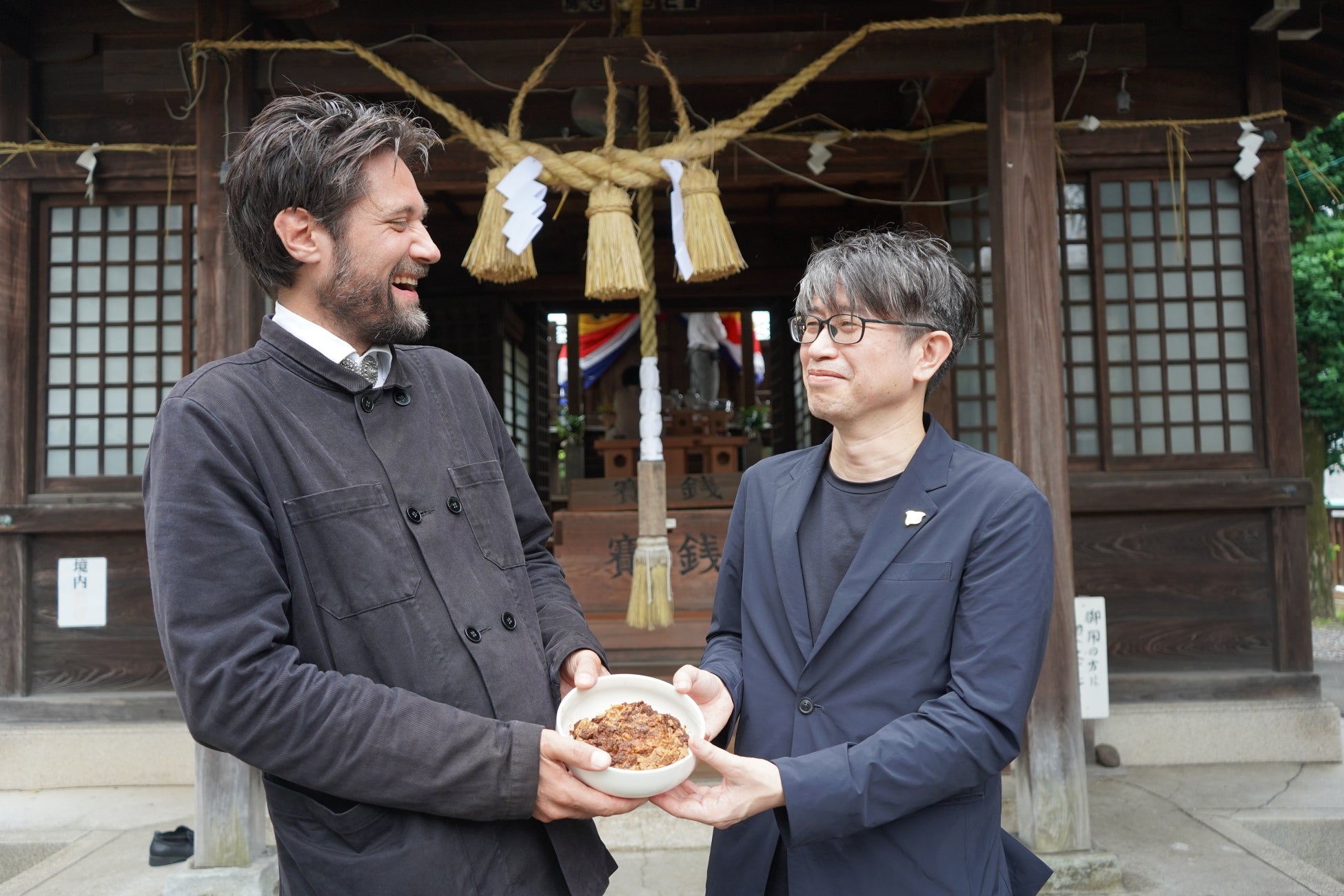During a miso mix wedding ceremony on the 8th of July 2023, Arne Hendriks and Hidetoshi Kuranari, CEO of Creative Project Base inc. mixed their home-made miso’s from The Netherlands and Japan. This first-ever special occasion took place in the Miso Tenjin shinto-shrine, in Kumamoto, Japan.
Arne Hendriksは、アムステルダムを拠点にするアーティスト、リサーチャーです。環境問題や持続可能性、そして健全な地球の未来に向けた創造力を刺激する作品を発表し続けています。
Arne Hendriks is an artist and artistic researcher based in Amsterdam. His work is especially concerned with ecological issues, sustainability and the urgency of inspiring imaginations towards a healthy planetary future.
彼は3年前から、日本の味噌に興味を持ち始めました。オランダと日本は、長崎の出島を通じて、長い間良い関係が続いていたにもかかわらず、なぜオランダ東インド会社は、美味しくて健康的な味噌の魅力に気付かず、オランダに持ち込まなかったのか、疑問を持ったのがきっかけです。「もしも17世紀に味噌がオランダに伝わっていたら、オランダの料理、農業、畜産業は全く違ったものになったに違いない」と。
Hendriks’ interest in Japanese miso started because he asked himself why after so many years of Dutch-Japanese relationships through the small island of Dejima in Nagasaki, the Dutch East Indian Company never embraced the incredibly tasty and healthy star powers of the fermented bean paste known as miso, and thus never exported it to The Netherlands. “What would have happened if miso would have reached The Netherlands in the 17th century, and how could it have positively effected Dutch cuisine, farming and culture?”
現在、オランダの味はウマミを得るために主に肉や乳製品に依存していますが、味噌は多くの食品にウマミの風味を与えることができます。この仮説をきっかけに、Arneは、クリエイター、科学者、農家の方などと、小さなチームを組み、ゼーラント州で栽培された空豆を使用してオランダで味噌を作り始めました。まもなく、オランダとヨーロッパで味噌の素晴らしさを広めるために、1000人のネットワークを作る予定です。
Currently Dutch taste still very much depends on meat and dairy products for umami but miso could have made and still can make a difference, giving umami flavour to many foods. Together with a small group of creatives, scientists and farmers, he started to make miso in the Netherlands with faba beans grown in Zeeland province. His ambition is to start a network of 1000 miso friends to spread and promote miso appreciation and the art of making miso in The Netherlands and Europe.
彼は、味噌は、心にも健康にも、そして地球にとっても良いと、多くの特徴を称賛しています。味噌を作れば、人間が植物、動物、菌との共存について、そして、待つことを通じて忍耐力や時間の認識、協力の重要性について理解が深まります。つまり、味噌は単なる食べ物ではなく、より多くの存在との良い関係を築くためのプラットフォームであると考え、彼はこれを「味噌哲学」と呼んでいます。
Hendriks celebrates the many qualities of miso, “It is good for the planet, it is good for the mind, and it is good for health. Miso will also help us understand that we need other species of plants, animals and fungi to exist and live well.”. Hendriks is asking the public to collectively develop a miso philosophy that will allow us to appreciate the importance of good flavour, patience, cooperation and spending time together. That means “Miso is not only food, but a good network of more-than-human forces.”
そして、2021年、15年来の友人である、Creative Project Baseの倉成英俊に、「お互いの国の味噌を混ぜないか」そしてそのプロセスを「味噌同士の結婚式にしないか」というアイデアを提案します。
In 2021, Arne Hendriks asked Hidetoshi Kuranari, a creative friend from Japan, if they could mix their homemade miso’s, and presented the idea to have the mixing event as a wedding ceremony to articulate the importance of beans and the culture of fermentation.
それを受け、倉成は、日本で式を行うならば、神社で、できれば、日本唯一の味噌の神社、熊本の「味噌天神」で行うよう提案し、プロデュース。7月8日土曜日、味噌の結婚式を執り行いました。
Hidetoshi responded to the offer with the idea to have the ceremony in the Miso Tenjin shrine in Kumamoto, which is the only miso shrine in Japan.
式は、本村神社(味噌天神宮)の黒川弘美 禰宜によって、執り行われました。祝詞の中では、お互いの味噌が美味しくできるよう、またお互いの国の交流、人同士の交流が今後も発展するように読み上げられ、祈りが込められました。
The ceremony was carried out by shinto priest, Hiromi Kurokawa. First, she prayed to the god of miso that each miso would mix & go well together, and then she wished that the relationship of the people and countries would go well for the future.
その後、味噌を混ぜる儀式が行われましたが、これは「味噌合わせの儀」と呼ばれました。
持ち寄った味噌を、オランダ側は西洋の金属製のスプーンで、日本側は木製の味噌ベラにて、双方の甕の真ん中に置かれた、白い器によそいました。この儀式は前例がないため、Arneの発案により、一匙よそう度に、「My miso is your miso. Your miso is my miso.(私の味噌はあなたの味噌。あなたの味噌は私の味噌。)」という言葉を三度唱えながら行い、最後は禰宜が味噌を混ぜ合わせ、神前に捧げました。最後に、参列者全員が、新しい白い壺にメッセージを書き、その中に日蘭の合わせ味噌が詰められました。
After the prayer the ‘miso fathers’ took miso from each pot, with a simple Dutch metal spoon and a Japanese wood miso spoon, and added it to a white mixing bowl in the center. With each spoonful of miso they said the words: “My miso is your miso. Your miso is my miso”. The action was repeated 3 times as appropriate in shinto rituals. The priest then used both spoons to mix the miso’s and dedicated the newly-wed fermented bean paste to the god. The guests then wrote good luck messages on the miso pot.
式の後、味噌天神の境内にある公民館にて、この合わせ味噌を使った、日蘭の合わせ味噌汁がふるまわれました。調理したのは、福岡県糸島市で活躍する料理家、広沢京子氏。広沢氏はArneからのオランダらしい食材の提案を受けつつ、2つの味噌汁を考案しました。
After the ceremony, the mixed miso was cooked into miso soup by Kyoko Hirosawa, chef from Itoshima-city, Fukuoka, and served to all the participants.
1つ目の味噌汁は、マッシュルームを使ったもの。日本側の食材としては油揚げを合わせ、ネギもリーキ(西洋ネギ)と日本の青ネギが組み合わせられました。2つ目は、ムール貝を使ったもの。日本側からはシジミを合わせ、生姜も加えられました。出汁は、双方とも干し鱈(Dried Cod)と昆布から取られました。
Hirosawa created 2 recipes, each including familiar ingredients from both countries. The first one was made with mushroom and fried tofu, leek and Japanese green onion. The second one was a shellfish collaboration, made with Zeeland Dutch mussels and shijimi, Japanese freshwater clam. The dashi soup stock was made from dried cod and kelp.
全てが日蘭ミックスの全く新しい味噌汁を、参加者が堪能し、この日の行事は全て終了。来年は、オランダとの縁が深い長崎市にて、新たな味噌のプロジェクトについて、考え始めています。
Continuing after the miso mix wedding ceremony, Creative Project Base and Arne Hendriks plan to start a new miso philosophy project opening in 2024 on Dejima island, Nagasaki-city, where since the 17th century, the Netherlands and Japan developed a long-standing excellent relationship. Although miso was not part of that relationship, the new miso-fathers hope this will change in the near future.
Arne Hendriks Website : https://arnehendriks.net/
Creative Project Base Website : https://www.creative-project-base.com/
Kyoko Hirosawa 広沢京子 Website : https://cookluck.com/
Miso Tenjin 本村神社/味噌天神宮 : https://kumamoto-guide.jp/spots/detail/151
Photos by Kosuke Takahashi 高橋鴻介 : https://ootori.co/

